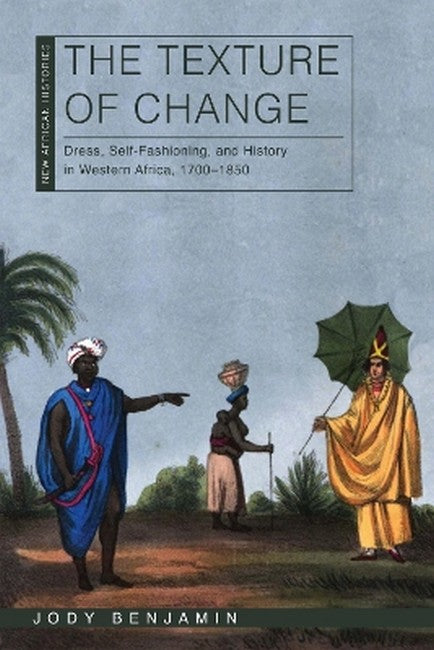Jody Benjamin is an assistant professor of history at the University of California, Riverside. His research and teaching interests include West Africa (Senegal, Mali, Guinea), textiles, dress, fashion history, African Atlantic migration, diaspora, and intellectual history.
Request Academic Copy
Please copy the ISBN for submitting review copy form
Description
List of Illustrations Acknowledgments Introduction Chapter 1 Twelve Measures of New Cloth and a Magnificent Bubu: Bamanan Kaarta between Sahel and Sea Chapter 2 Cotton Cloth in Western Africa: Barafulas, Bafetas, and Piezas de India Chapter 3 Centering the Sahel in the Early Eighteenth Century: Indigo Dyers, Precarity, and the Pull of the Faleme River Valley, 1730-1750 Chapter 4 The Politics of Dress at Saint-Louis during an Age of Islamic Revolution, 1785-1815 Chapter 5 Merchants, Maroons, Mahdis, and Migrants on the Upper Guinea Coast, 1795-1825 Chapter 6 Textures of a Changing Era: Old Redcoats, Groundnuts, and Afro-Atlantic Missionaries, 1825-1850 Conclusion Notes Bibliography Index
The Texture of Change is a striking social and cultural intervention focusing on a textile trade that, in tandem with the transatlantic slave trade, had a transformative effect on West Africa. Writing with fluidity, clarity, dexterity, and with analytical depth, Benjamin makes an original contribution to the study of the period's global system of exchange. - Michael A. Gomez, New York University Jody Benjamin has crafted an engaging and deeply researched study that opens new vistas in African history. He deftly demonstrates the critical role that textile production and consumption played in expanding regional economies-western Africa-while also integrating Africa into global networks of trade that linked the continent to India, Europe, and the Americas. Chapters may focus on methodology, an event, or a social group, yet collectively they capture the multiple, and sometimes overlapping, processes that led the region to cohere: environmental crises, rise of new states, resistance to enslavement, the transatlantic slave trade, and the emergence of new social groups. Through analyses of dress and adornment in oral traditions, images, travel accounts, museum collections, and government reports, Benjamin provides a more granular perspective on how these changes shaped the lived experiences of elites, popular classes, and laborers in multiple occupations. This book will be of great value to scholars in social and economic history, cultural studies, anthropology, sociology, and fashion studies. - Judith A. Byfield, Cornell University

